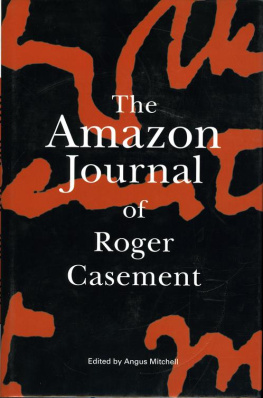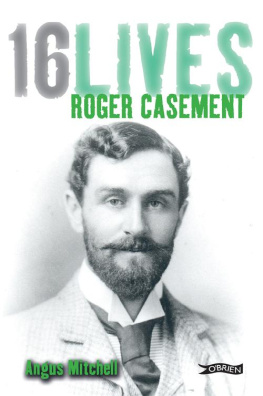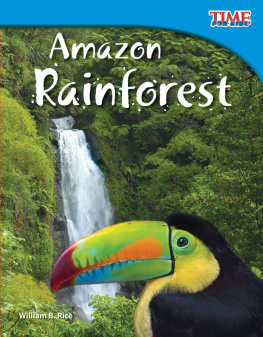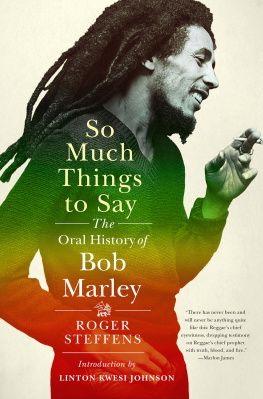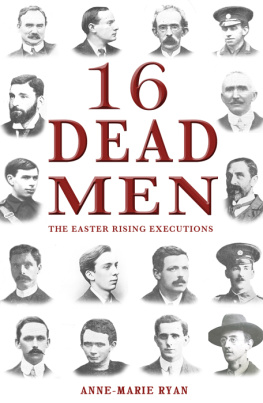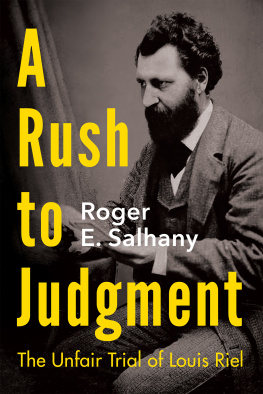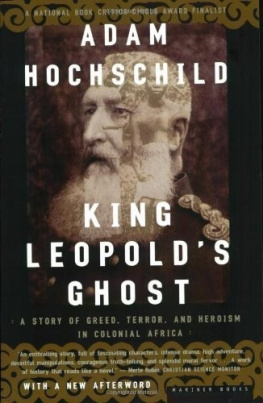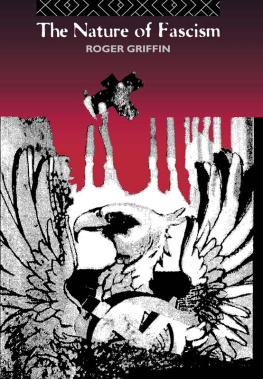In November 1993 I was commissioned by a London publisher to write a book about the Putumayo atrocities an all but forgotten episode in the disastrous annals of the Amerindian tribal experience at the hands of the Western world. The events of this genocide remained in the public eye between 1909 and 1914. Besides being a well-documented aspect of the long, tragic, extermination of the Amazon Indian, what gave the telling of this story a peculiar interest were the documents that stood at the centre of the narrative, the infamous BlackDiariesofRogerCasement. In March 1994 those diaries were finally released into the public domain under the Open Government Initiative, and it was something of a surprise to discover that three of the four BlackDiaries dealt in the most part with Casements voyages into the Amazon to investigate the Putumayo atrocities in 1910 and 1911. For the next two years I steadily gathered relevant documentation and puzzled over what happened long ago in the darkest forests of South America. Though I was aware of the accusations of some Irish historians claiming that the BlackDiaries were forged, my initial belief in their authenticity rested upon the opinions expressed by official British history, Casements recent biographers and current orthodoxy among anthropologists.
In April 1995, after returning from a three-month trip across northern Peru and down the Amazon, I signed a further publishing contract to co-edit Casement Diaries with Dr Roger Sawyer, whose biography TheFlawedHero contains the fullest bibliography on Casement and was of invaluable service to my own research. It was our intention to publish diary material that had never before been published, including the most explicit diary of all, the 1911 LettssDeskDiary. Permission was obtained from the Parry family, Casements most direct relatives, to publish the documents.
In the summer of 1995 I spent six weeks at the National Library of Ireland (N.L.I) in Dublin going through two large metal boxes containing Casements personal papers relevant to his consular career in Brazil and his part in the Putumayo atrocities. Among them was the massive manuscript of his Putumayo Journal and a number of fragmentary diary entries describing other parts of his voyage. Perhaps because of the sheer size of this archive it had been almost wholly overlooked. During my last week of work at the N.L.I. my understanding of the Putumayo atrocities had to be seriously revised as I began to have grave doubts about the authenticity of the BlackDiaries. There was, quite simply , too much documentation that did not add up and too much to suggest that Casement had been the victim of a brilliant, though sinister, scheme hatched by British intelligence to prevent him attaining martyrdom upon his execution for treason in 1916. It was also clear that Casements biographers had only touched the surface of his Amazon investigations. When I returned to London I began to make my own investigations into the authenticity of the documents and was forced to investigate the rumours surrounding the BlackDiaries. In October 1995 over one hundred and seventy closed Casement files were opened twenty years early, also under the Open Government Initiative, and after eighty controversial years the Casement affair was effectively exorcized by the British government. But an ensuing correspondence in TheIrishTimes showed that though the British press was unequivocal in its portrait of Casement as the Gay Traitor there was still a strong lobby of Irish opinion that was not prepared to let the matter rest.
The breakdown in the Anglo-Irish peace process in early 1996 seemed to bring a reaction to the mounting interest in what might politely be called republican elements in Irish history. The book I had originally intended to write no longer reflected my understanding of Casements life. It was clear that if Casements reputation was ever going to be cleared of the defamation it had undergone, it was necessary for his genuine writings to speak for themselves. What mattered was the publication of his own narrative through the reconstruction of his own chronicle built from what remains of his own genuine journals and letters. Only by printing primary material and showing how it differed from the BlackDiaries might this deeply entrenched lie about the man be cleared up and the opinion, conjecture and straightforward lies surrounding his character be historically exposed.
My attitude to the BlackDiaries also changed. There now seemed no need to publish them unless one wished to throw oil on the fire. They have poisoned the reputation of Casement and muddied the waters of South American history. To publish them only serves to inspire more hatred and create more public confusion over a serious issue. Perhaps least of all do they serve the gay community or merit a place in twentieth-century homosexual literature. They were manufactured in an age when acts of homosexuality were considered sexually degenerate. Whoever wrote the diaries had a desire to portray Casement and homosexuality as a sickness, perversion and crime for which a person should suffer guilt, repression, fantasy, hatred and, most of all, alienation and loneliness. These are not the confessions of a Jean Genet or Tennessee Williams, W.H. Auden or Oscar Moore. Rather than sympathizing with the struggle of the homosexual conscience, they are clearly homophobic documents.
After three years work it also became clear that the Putumayo atrocities were a far more complicated and detailed affair than I had ever imagined. The whole economy of wild rubber that boomed between 1870 and 1914 gave rise to two of the worst genocides in the history of both Africa and South America genocides that were a well-kept secret at the time and have been overshadowed by the even greater horrors wrought subsequently this century. Some of the horror the world has witnessed in the last few years in Rwanda, Burundi and Zaire (formerly the Congo Free State, renamed as the Democratic Republic of Congo), the war that continues in the frontier regions of the north-west Amazon, even the murder of Chico Mendes and the execution of Ken Saro-Wiwa are all historically rooted in the horrors committed in the Congo and Amazon in the collection of rubber a century ago. The African writer Chinua Achebe has said that Africa is to Europe as the picture is to Dorian Gray, and though South America is a more peaceful continent than Africa, the Amazon basin remains one of the most brutalized ends of the earth where the last significant community of Amerindian people is being forced to live out its apocalypse.
It is hoped that the publishing of TheAmazonJournalofRogerCasement will stimulate deeper awareness of the historical tragedy , as well as confirm his place as a great humanitarian. It is also hoped that those who are prone to confuse rhetoric for evidence , biography for history or official history for truth might now come to know the facts for themselves.
My work on this subject has been helped by many friends, friends of friends and librarians. In England my thanks are due to the staff at The British Library; Public Record Office at Kew; British Library of Political and Economic Science; Rhodes House Library, Oxford; the Bodleian Library, Oxford and especially to Dr Jeremy Catto at my old college, Oriel.
In South America, to the former Spanish Consul Carlos Maldonado in Lima; Alejandra Schindler and Joaqun Garca Snchez at the Biblioteca Amaznica in Iquitos; to the staff at the Biblioteca Amaznica in Leticia. In Brazil to the highly co- operative staff at the Archivo Pblico in Belm do Par and Manaos and at the Palacio Itamaraty, Rio de Janeiro. It should be said that Iquitos, Leticia and Belm have three of the most beautiful libraries in which I have had the pleasure to work.

